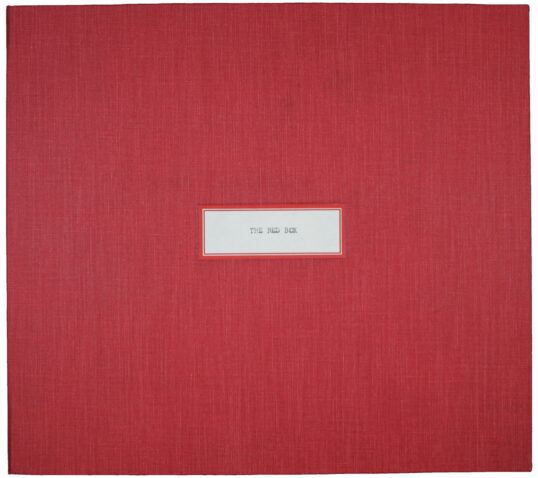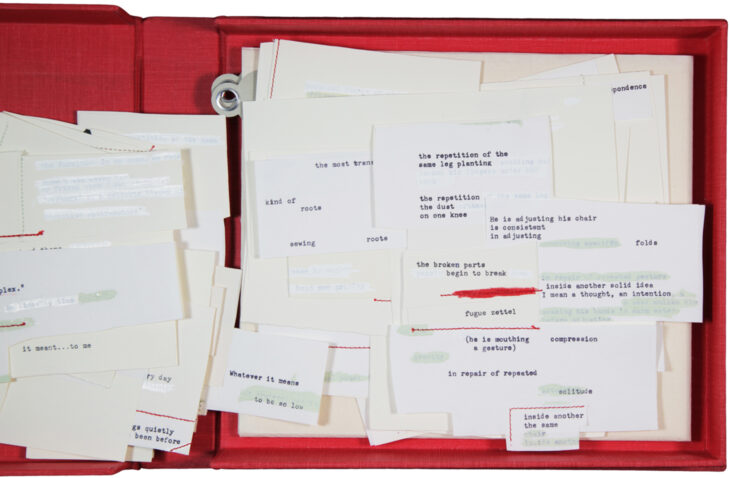The pianist Glenn Gould used the same folding chair that his father adapted for him throughout his performing career; it was quite low, affording him positioning in relation to the keyboard that he could not otherwise have achieved. The drawings in The Red Box are based on photographs from performances and studio recordings that span Gould’s career. His chair deteriorates, and the shape of Gould’s body in the photograph manifests where the chair is obscured. The last bare chair, viewed in its entirety, is drawn from a photograph of the chair taken after Gould’s death.
Bervin writes: “Gould’s writing, Ludwig Wittgenstein’s Zettel, and my own writing constitute the text fragments. I was drawn to Gould’s desire for machine-like artistic precision, Wittgenstein’s desire for linguistic specificity, and the way the corporeal presence (Gould’s humming, the chair squeaking) inevitably slips: ‘A slip is something specific.’”
“The drawings and text fragments were editioned exactly as they were created: reproducing and incorporating every error, edge, gesture, and all layers of written, cancelled, and revised text. The copies are indistinguishable from the original.”

